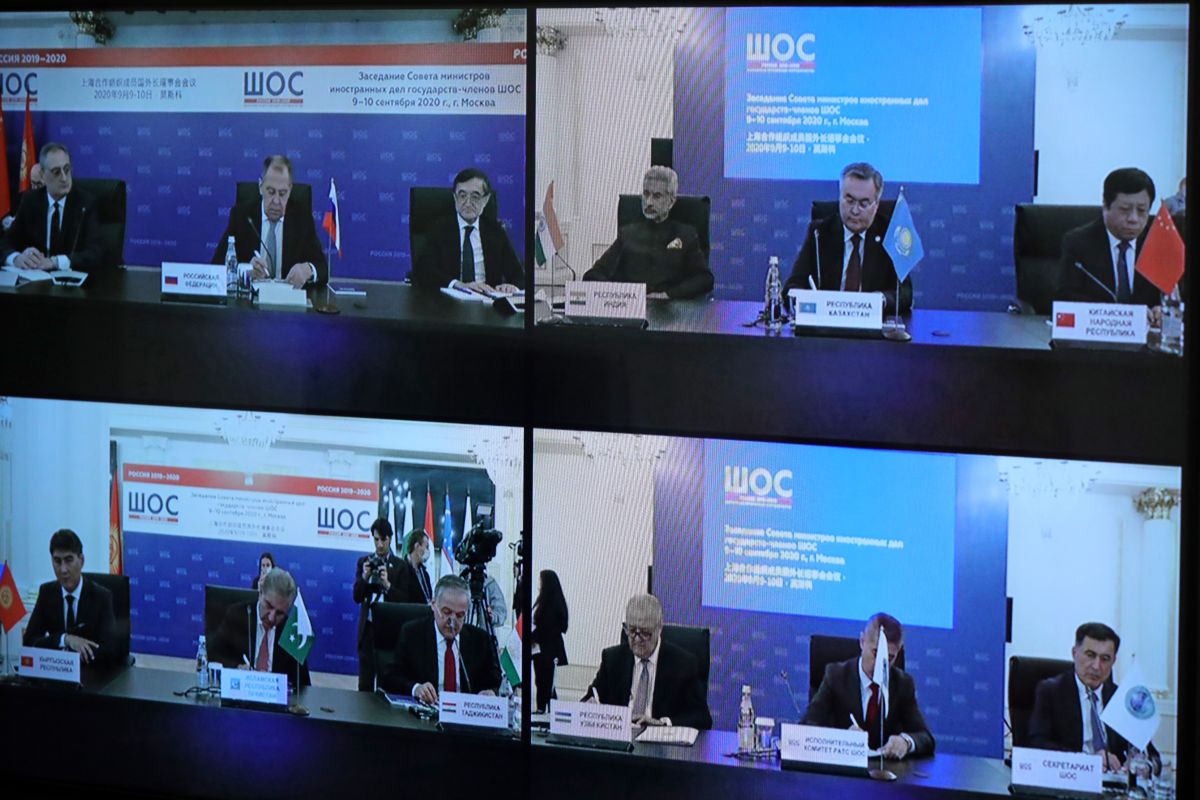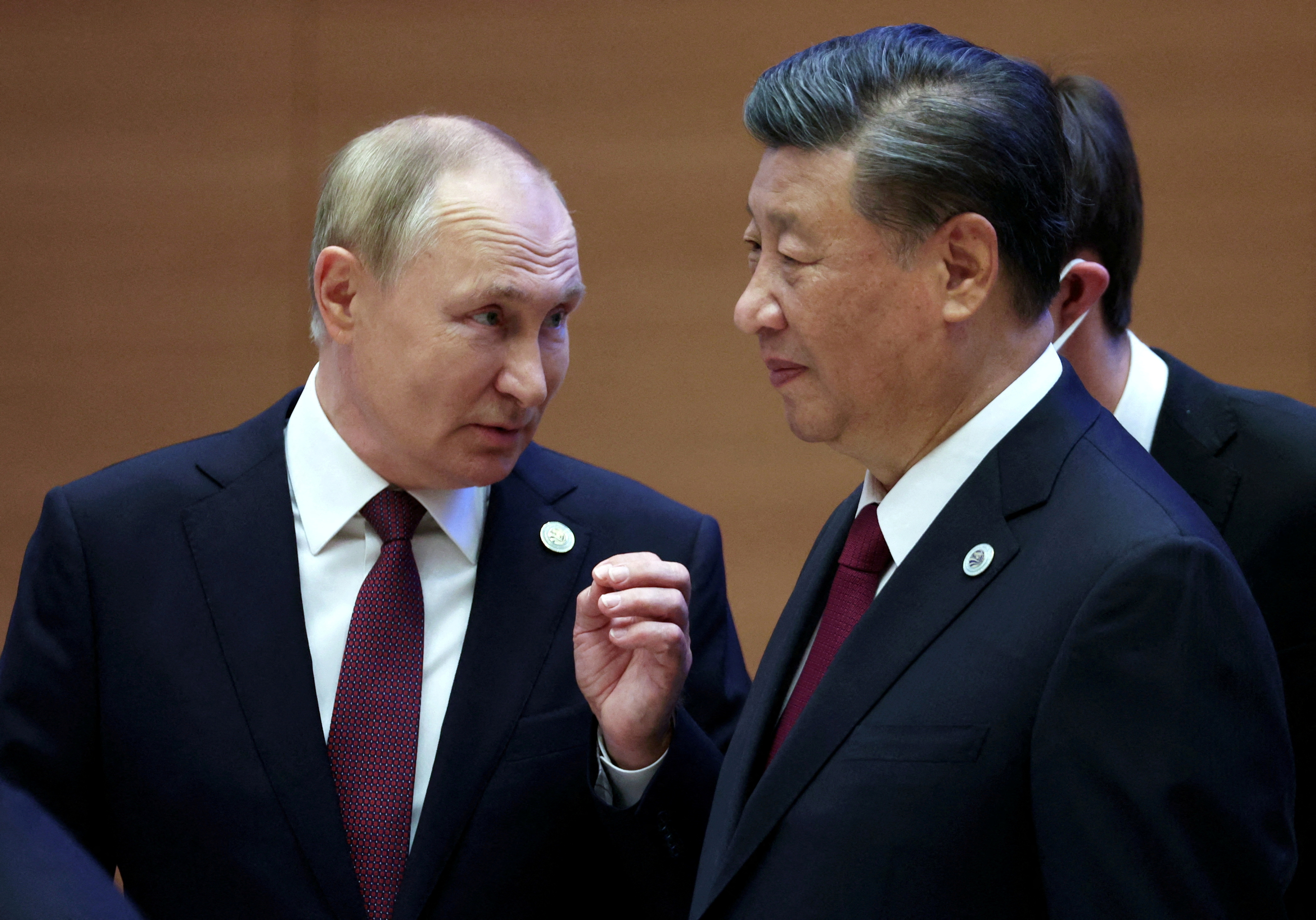China Trying to Gain Greater Influence in Central Asia
The China-Central Asia Summit held in Xi’an in May confirmed China’s desire to strengthen its presence in the region at Russia’s expense. Among the reasons is Central Asian states’ scepticism of Russian aggression in Ukraine. At the same time, China’s stronger political and security-sector involvement is expected to confirm its image as bringing stability to the international situation. To balance Russian-Chinese influence in Central Asia, the EU would be advised to accelerate the implementation of investment projects in the region and to intensify, together with the U.S., the dialogue with states there, especially on tightening sanctions against Russia.
.jpg) FLORENCE LO / Reuters / Forum
FLORENCE LO / Reuters / Forum
From China’s perspective, relations with Central Asian states are important economically (import of natural gas from Turkmenistan or oil from Kazakhstan), in terms of security (stabilising Afghanistan), as well as being an important element in the development of relations with Russia. The creation in 2001 of the Shanghai Cooperation Organisation (SCO) was intended to improve the interaction between Russia and China in the region. However, the imbalance of their potentials has resulted in ineffectiveness in the SCO in pursuing Chinese interests, including the stabilisation of Central Asia. China, realising its limitations in power projection, accepted an informal division of responsibilities in which it was “responsible” for economic cooperation with the region, while Russia was responsible for political issues and possible “stabilisation” interventions. An example of this cooperation was the 2022 intervention in Kazakhstan.
For China, it has been important not only to increase Chinese exports to Central Asia and imports of energy resources but also to support the authorities in the region to maintain power. This has been achieved by, among other things, infrastructure projects (e.g., the construction of the Kazakh section of the Lianyungang-Petersburg highway) and joint exercises of the security apparatus and police. In 2022, China’s trade with Kazakhstan, Uzbekistan, Kyrgyzstan, Tajikistan, and Turkmenistan was worth more than $70 billion, the highest ever. Chinese investment over the past 30 years was worth more than $14 billion. In 2013, in Kazakhstan, China’s leader Xi Jinping announced the start of the land dimension of the Belt and Road Initiative (BRI), including the development of transport links with the EU. China also used the chaotic U.S. withdrawal from Afghanistan in 2021 to present its own diplomatic engagement in Central Asia to the international community as a stabilising factor.
Developments Since the Russian Invasion of Ukraine
The attack on Ukraine in February 2022 has complicated Russian-Chinese cooperation in the SCO, not least because of the increased concerns of Central Asian states towards Russia’s neo-imperialist policies, as well as by the lack of consensus within the Collective Security Treaty Organisation (CSTO). The scepticism expressed by the region’s states towards Russia’s actions and its growing dependence on China represent an opportunity for the latter to strengthen its economic, as well as political and military presence in Central Asia and its position in the international community, including by gaining support for China’s Global Development Initiative (GDI) or Global Security Initiative (GSI). Declarations by the countries in the region supporting Chinese aspirations to take over Taiwan are also an important element in this context. A signal of growing Chinese ambitions in Central Asia was Xi’s statement during his meeting with Russia’s Vladimir Putin at the 2022 SCO summit in Samarkand about the need for Russia to take Chinese interests in the region into account. The Chinese chairman also made statements prior to the summit in support of the sovereignty of countries in the region during official visits to Uzbekistan and Kazakhstan, the first after China lifted pandemic restrictions. In January 2022, China’s relations with Turkmenistan were also upgraded to a strategic partnership. Work has also intensified on some of the suspended Chinese investments in the region, including, for example, a rail link between China, Kyrgyzstan, and Uzbekistan. There was also an activation of a sort in relations with Afghanistan, albeit without diplomatic recognition of the Taliban government, when Wang Yi, China’s foreign minister at the time, visited in March 2022.
Effects of the Summit
The China-Central Asia Summit (18-19 May) strengthened China’s image as an active player in the region. Among other things, the summit increased the confidence of Central Asian leaders in China’s support of their sovereignty. The Chinese side gave the meeting a special setting, referring, among other things, to the ancient Silk Road tradition. A record number of more than 80 agreements were concluded, including on the occasion of bilateral visits by the leaders of most countries invited to the summit (Turkmenistan was the exception). On the multilateral front, top-level meetings were established as a regular mechanism for China to communicate with countries in the region. The next meeting will be held in 2025 in Kazakhstan. Talks will also be held to further institutionalise cooperation, for example, the establishment of a China-Central Asia Secretariat (most likely within the Chinese Ministry of Foreign Affairs). China was reported to offer the region financial support (both in multilateral forums and bilateral arrangements) worth more than €3 billion, accelerate cooperation in e-commerce, civil aviation, customs facilitation, and obtained a pledge from Uzbekistan to maintain gas supplies. A significant development was Xi’s emphasis on the need for closer multilateral cooperation in the security sphere. The details of his proposal were not made public, but it is likely to focus on strengthening cooperation between the region’s police bodies, including anti-terrorism exercises suspended during the pandemic. Security was a particular focus of the communiqués following Xi’s meeting with the leaders of Kyrgyzstan and Tajikistan, which included, among other things, the possibility of joint military exercises.
Political declarations from the summit (including a joint statement by all participants) indicate acceptance by Central Asian states of Chinese global concepts, including the GDI and GSI, as well as support for Taiwan’s “peaceful reunification” with China, as explicitly expressed by the president of Kazakhstan and others. China avoided anti-U.S. rhetoric, as well as references to relations with Russia, probably not wanting to put summit participants—who are trying to pursue a balanced policy—in an awkward position. The issue of Xinjiang, for example, where a large proportion of those persecuted by China are Kazakhs and Tajiks, was also not addressed. Cooperation in the fight against the East Turkestan Islamic Movement (a regional separatist organisation) was only explicitly mentioned in the communiqué following Xi’s meeting with the Kyrgyz leader.
Conclusions and Outlook
China’s increased activity in developing political and security cooperation with Central Asian states does not represent a breakthrough in Chinese foreign policy, especially in the context of relations with Russia. China continues to prioritise them, but is trying to take advantage of Russia’s weakness to increase its influence in Central Asia. In China’s view, Russia continues to play an important role in the region (a perspective also held by Central Asian states), but its current problems allow this position to be gradually reduced. This is also expected to bring greater independence for China from Russia in terms of stabilising the situation in the region. This does not, however, imply a readiness and willingness on the part of China to undertake strictly military operations in the region (e.g., to keep the current leadership in power), although the development of security cooperation may imply its pursuit of such opportunities.
The China-Central Asia summit was also another element of strengthening China’s position in dealing with developing countries, including gaining partners in the face of intensifying rivalry with the US. The establishment of a permanent mechanism for meetings at the highest level will be presented to the international community as a stabilising effect of China’s policy, including in the context of the difficult economic and social situation in Afghanistan.
From the EU’s point of view, China’s actions imply the need to accelerate planned development initiatives in Central Asia. They are intended to draw the countries of the region away from cooperating with authoritarian regimes and will serve as part of the diversification of suppliers to the EU of raw materials and rare earth minerals. This can be done within the framework of the Global Gateway programme. Both the agreement (roadmap) concluded by the European Commission in Kazakhstan on 18 May on, among other things, the extraction of rare earths and a project to finance the expansion of a hydroelectric power plant in Tajikistan (Rogun Dam) are part of this programme. It is important to intensify the political dialogue, in coordination with the U.S., to strengthen the sense of security and sovereignty of the countries of the region. The EU Special Representative for Asia, appointed in 2019, should be more closely involved in these activities. Identifying possible mechanisms for circumventing sanctions in the region, which are possibly used by, among others, actors cooperating with China in this sphere, should also be part of the cooperation with the U.S. Depending on specific case, this could entail the extension of sanctions to individual Central Asian entities. The negative effects of these actions should be counterbalanced by a message focusing on the gains from economic cooperation with the EU and its political support for the countries of the region, encouraging them to reduce their cooperation with Russia and China.





.jpg)